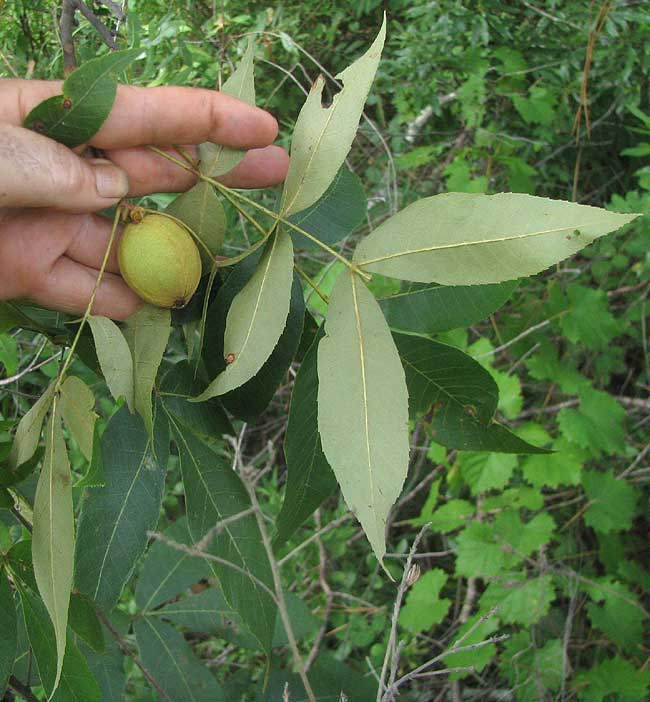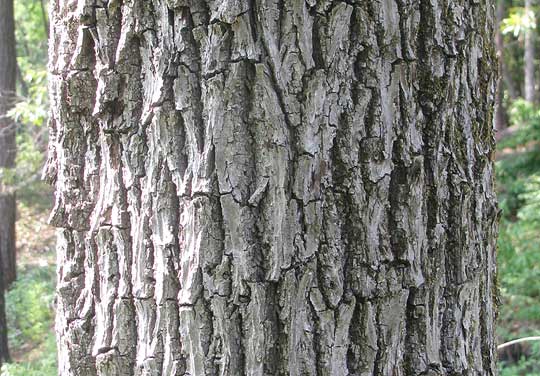Excerpts from Jim Conrad's
Naturalist Newsletter

from the July 1, 2012 Newsletter issued from the woods of the Loess Hill Region a few miles east of Natchez, Mississippi, USA
SAND HICKORY
Among the hickories -- genus Carya in the Walnut Family -- there's a grouping of species producing slender stems and smallish nuts with thin shells. These species are known as pignuts. Pignut hickories are common in our woods, the species nearly always encountered being a taxonomically ambiguous one we call "the Carya glabra-ovalis complex," as discussed at http://www.backyardnature.net/n/w/pignut-h.htm.
At the abandoned Pipes Lake {~N31.38°, ~W91.16°, elev. ~140ft (~40m)} Campground in Homochitto National Forest near here we came upon some smallish trees that were clearly pignuts, but even at a distance they clearly were not part of the Carya glabra-ovalis complex. Mainly, their immature nuts were too large, or "bulbous," and they had a golden hue. Also, the undersurfaces of their leaves were too silvery-pale, to be "normal" pignuts. You can see this, my hand twisting a leaf so its leaflets' pale undersides contrast starkly with the much darker leaflets below them, at the top of this page.
The thin, leathery shell of our usual pignut splits only to about halfway down the nut, but the shells on this tree showed split lines all the way to the nut's base, as shown below:

Realizing that this was a species uncommonly found in our area, and remembering that bud, stem, and petiole features can be important in hickory identification, I got a picture showing those details, shown below:

The tree's bark is shown below:

Also, something struck me as peculiar about the leaflets' undersides, so I got the close-up shown below:

That picture turned out to be important, for it shows critical features used when "keying out the species" with the online Flora of North America Carya page. A "key feature" is that the silvery zones on the leaflet's underside are not merely silvery leaf epidermis exposed between the leaflet's ultimate veins, but rather are silvery "peltate scales." The term "peltate" means "attached at its center," as an umbrella's top is attached to its handle in the center. Also, sparsely scattered among the ocean of large, silvery, peltate scales are occasional smaller, tan-colored scales of various shapes, including four-sided ones. Also notice that the undersurface is practically hairless.
The abundant silvery scales on the leaflets' undersides are this species' main field mark, and give it its technical name. This is CARYA PALLIDA, "pallida" referring to the "pale" leaf undersurfaces. It's the Sand Hickory, endemic to the US Southeastern states. Flora of North America describes its habitat as "Well-drained sandy or rocky soils on bluffs, ridges, rolling hills, and dry woods." At Pipes Lake there were no sand or rocks, just a dry ridge of deep loess.
Though regular pignut nuts can be eaten by humans, usually they're thought of as too small to fool with and not particularly good. However, Sand Hickory nuts are both larger and sweet. As with other hickories and oaks, the inner bark with its tannin is astringent so extracts of it can be used to clean wounds, pucker minor cuts, to wash sore mouths, etc.